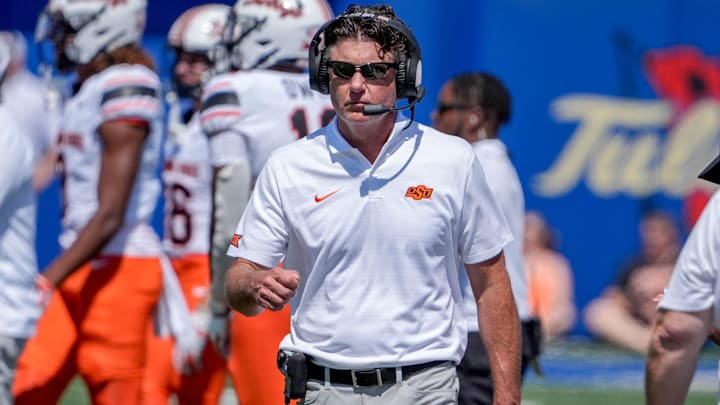In the wake of yet another painful loss, this time a stinging home defeat to Tulsa, Mike Gundy stood in front of the press and made something perfectly clear: he still wants it. He still cares. But you can also tell how heavy it is. How far things have slipped. And whether or not he realizes it yet, Gundy is now coaching in perhaps the most critical stretch of his storied Oklahoma State career.
At his postgame presser, you saw Gundy’s familiar posture of resolve. When asked what must change, he didn’t excuse the loss; he said he’d keep pushing the team, keep demanding better. He made it obvious that quitting isn’t an option—not yet. Not while the players are still in that locker room, still facing the fans, still trying to rebuild something that feels broken. It’s a rare moment when you get to see what has always made Gundy special: a refusal to give in. But that alone may not be enough.
One of the sharpest criticisms now is the way OSU has lagged behind in adjusting to the new realities of college football—NIL deals, the transfer portal, roster depth. In the years when OSU was near the top of the Big 12, Gundy’s program leaned heavily on player development, loyalty, and recruiting high school talent. Those things still matter. But if you ignore the portal and NIL (or treat them like exotic or temporary elements), you risk being out‑matched by programs that have embraced the change. This same fortune is similar to that of the Clemson Tigers. Dabo Swinney and co are finding it difficult to compete the same way the Pokes are. Both teams haven't used the transfer portal the same as most teams are in this current era of college football.
He admitted as much: after “thinking this would go away,” he finally recognized that these forces are permanent, that OSU had to adapt. He said the portal class from January of this year was the first time OSU “bought” portal players in a meaningful way. And he acknowledged that avoiding that strategy in past years hurt the Cowboys, especially in terms of depth. (Depth isn’t glamorous, but in a long, grueling season, it’s survival.)
It’s not only about bringing in star transfers or paying big NIL money. It’s also about building enough quality options so that when injuries, fatigue, or performance dips happen, the team can plug someone in and maintain standards. OSU’s roster shows gaps now: players stepping out or stepping up in places where there’s not much margin for error. That magnifies each mistake on the field: missed tackles, blown coverages, lack of execution when it matters.
Because of that, Gundy’s high emotional stakes are more than just rhetoric. Every loss crackles with consequence. The Tulsa result wasn’t just another blemish—it felt like something much more. A symptom rather than just an outcome. If Gundy doesn’t get meaningful change, both in scheme and in roster building, his legacy end in disappointment rather than renewal.
Still, there’s something worth respecting in his reaction. Coaches who’ve been around as long as Gundy sometimes settle into comfort. He hasn’t. He’s still fighting. He still speaks of the players, the fans, the university with affection, with the belief that things can turn around. And that desire, to not let this program drift into obscurity, should most definitely count for something.
But talk is cheap in this game. Passion matters, but so do decisions. Whether Gundy can accelerate adoption of transfer portal strategy, embrace NIL more strategically, and hold both himself and his staff accountable when things don’t improve will probably decide whether this season is salvageable—or whether it becomes his final chapter with the university.
